
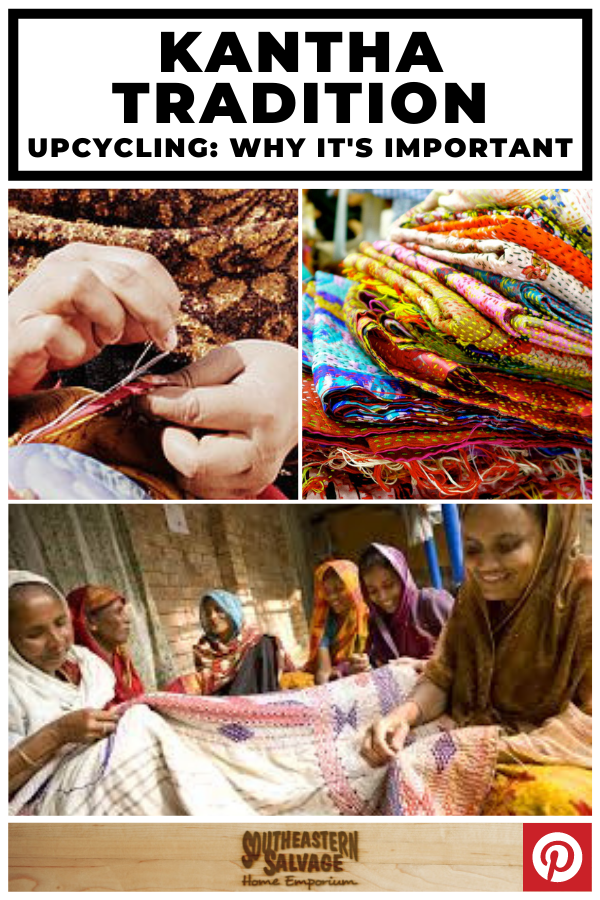
Most everyone has heard of recycling, but what is upcycling?

Recycling breaks down items in order to be reprocessed and then remanufactured – shredded paper is turned into pulp, plastic is melted into pellets, glass is crushed, melted, and recast. In essence, it’s the destruction of waste in order to create something new.

Upcycling, also known as creative reuse, repurposes discarded items in their current state without having to reprocess them. Your basic junk – useless, broken, and discarded items – can become interesting furniture, décor, and soft goods, rich in history and all with a story to tell.
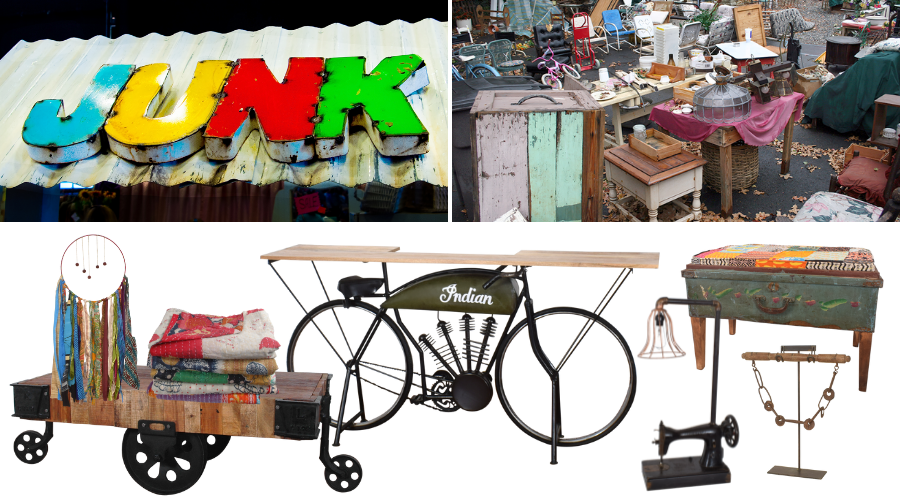
While recycling is practical, upcycling is highly creative, and both are important in reducing our carbon footprint. The more waste we keep out of landfills, the greater the positive impact on our environment as a whole.

Long before upcycling became trendy, village women in West Bengal, India have been stitching together scraps of cloth and old cotton saris, taking discarded rags and repurposing them into something useful and beautiful. These one-of-a-kind kanthas are made with pride by artisans who support their family and community through fair trade.
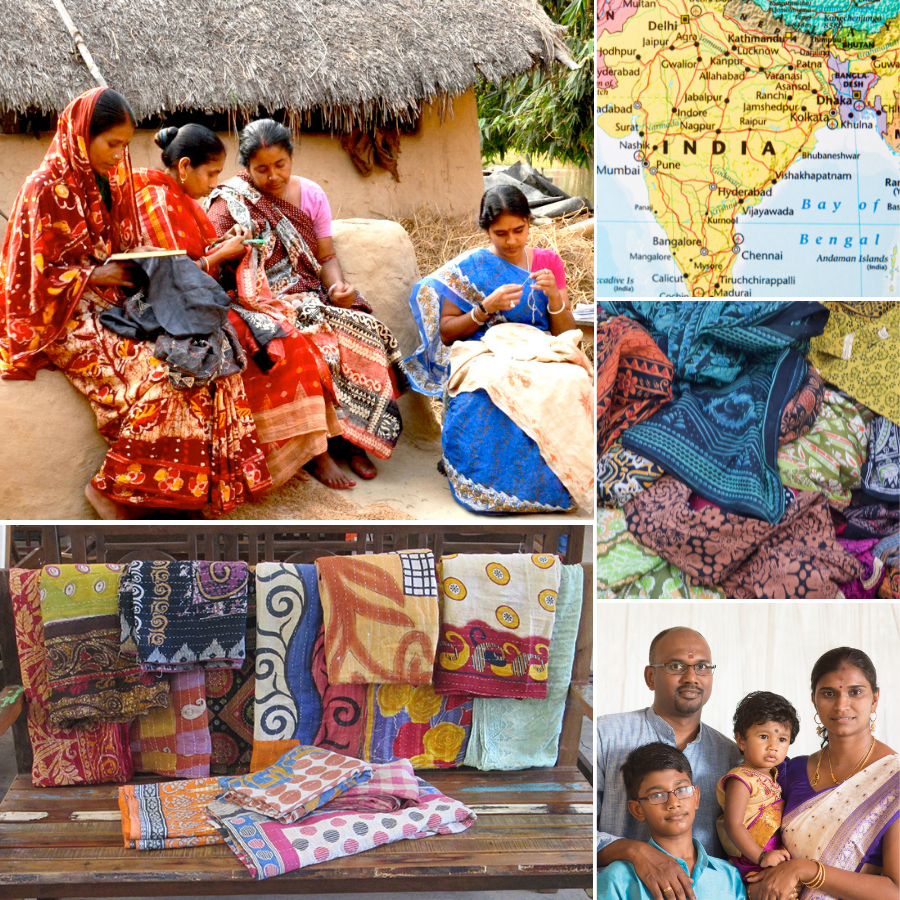
Kantha is a centuries-old tradition of hand embroidery and the skill is passed down for generations, from mothers to daughters. For these women, giving old textiles new life is an investment of time, skill, creativity, patience and love.
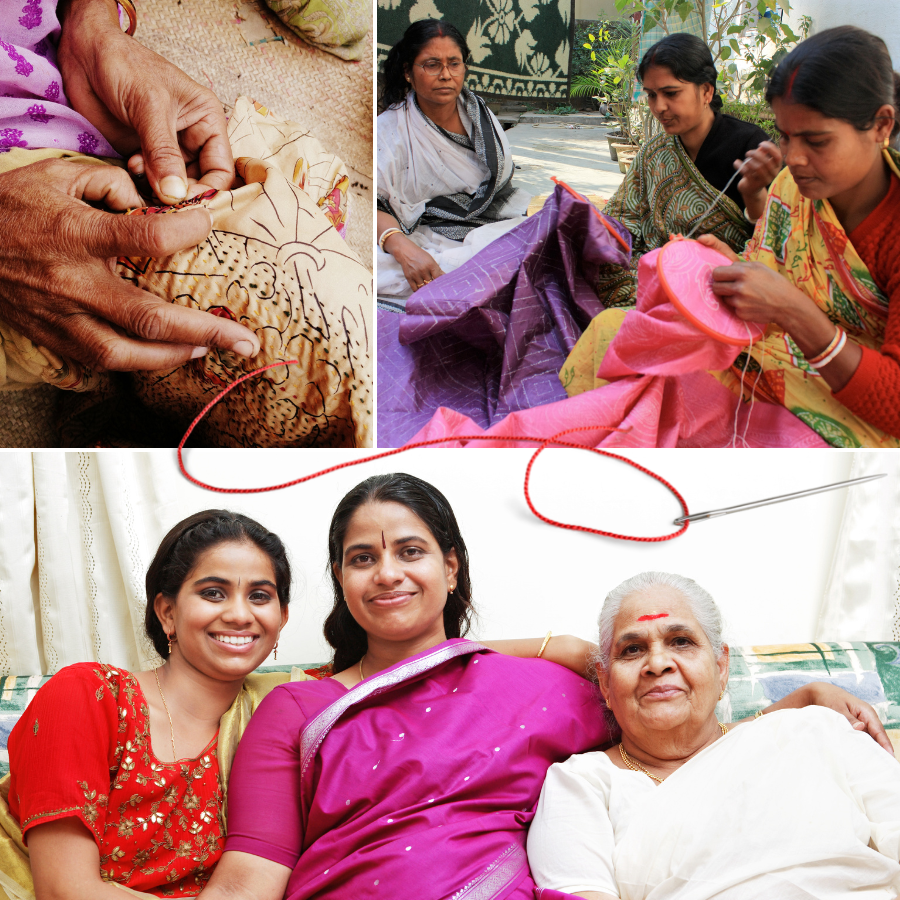
It is believed the word kantha comes from the Sanskrit word kontha, meaning rags or old cloth. It refers to both the simple, straight, running stitch that holds the upcycled fabrics together, as well as the finished piece of cloth.

Many of the old cotton saris, which have turned incredibly soft through years of wear, are donated to the village for use in kantha. Since the cloth is re-purposed it means no new dyes or inks are added, and the thread for the stitching is pulled from the edges of the fabric itself.
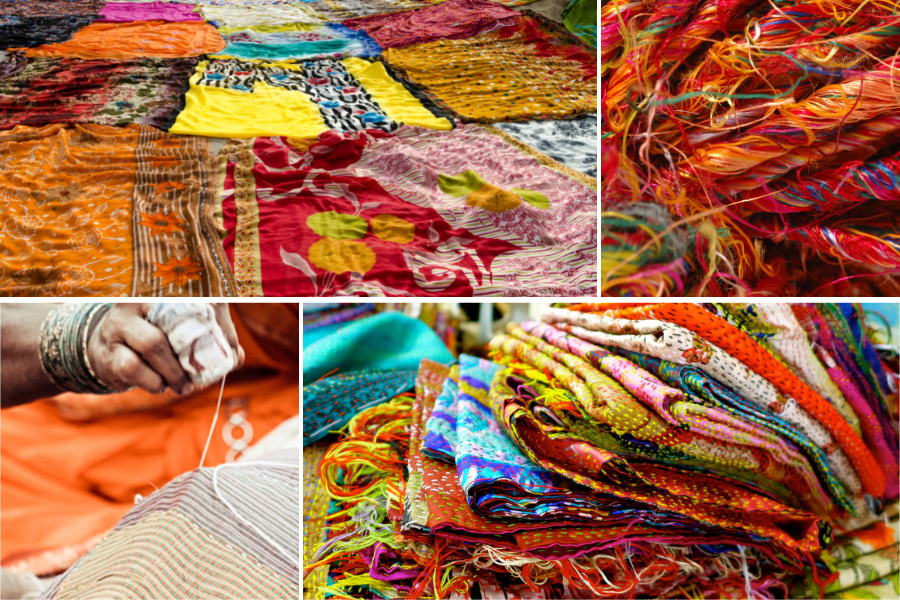
The cloth is layered and held together with some large, loose basting stitches around the edge of the fabric. It is then painstakingly hand-embroidered with thousands of small and delicate kantha stitches, usually starting in one corner and then running in parallel lines to keep the fabric flat. Each woman has her own personal style and stitch, making each piece entirely unique and truly a work of art.
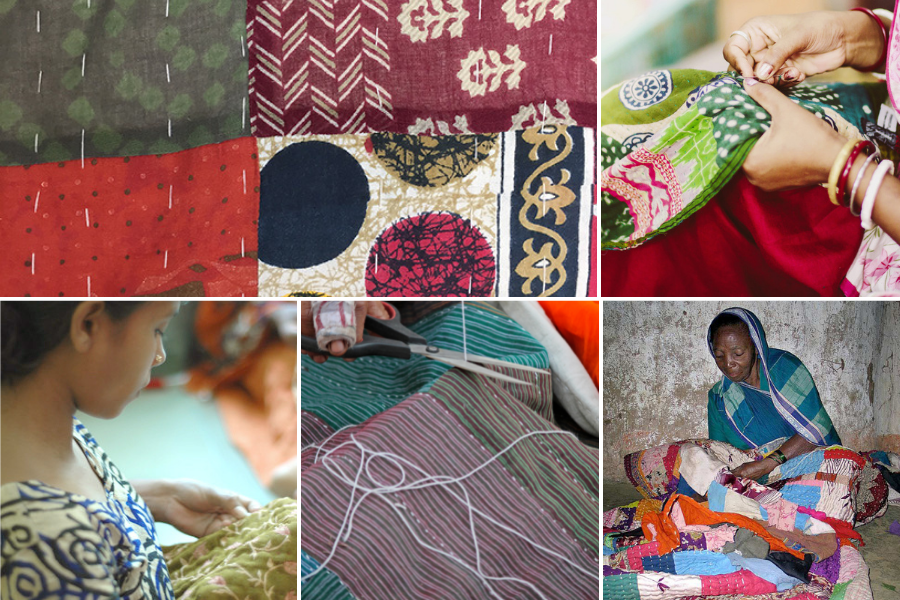
The workplace is social and communal, full of conversation and laughter as their children play together. It is so much more than just a living wage for these women because it allows families and communities to stay together in their village.
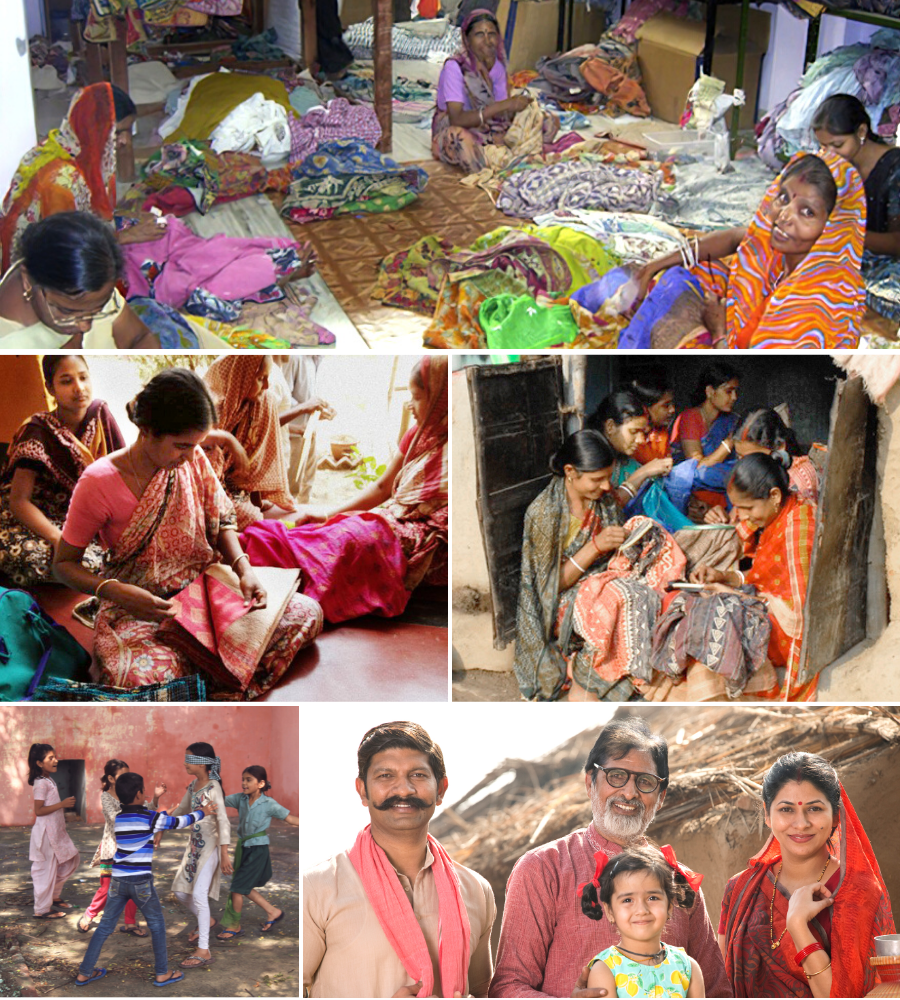
We sell a wide variety of Kantha products including throws and quilts, pillow covers, floor cushions, tote bags, and lamp shades. Sometimes we will even have more unusual items like our full size Kantha tiger statue, Kantha covered iron pots, and occasionally furniture items like stools and chairs. Because these items are handmade and each piece of Kantha is unique, no two items will be exactly the same, even if they are similar. And of course, styles vary by store.
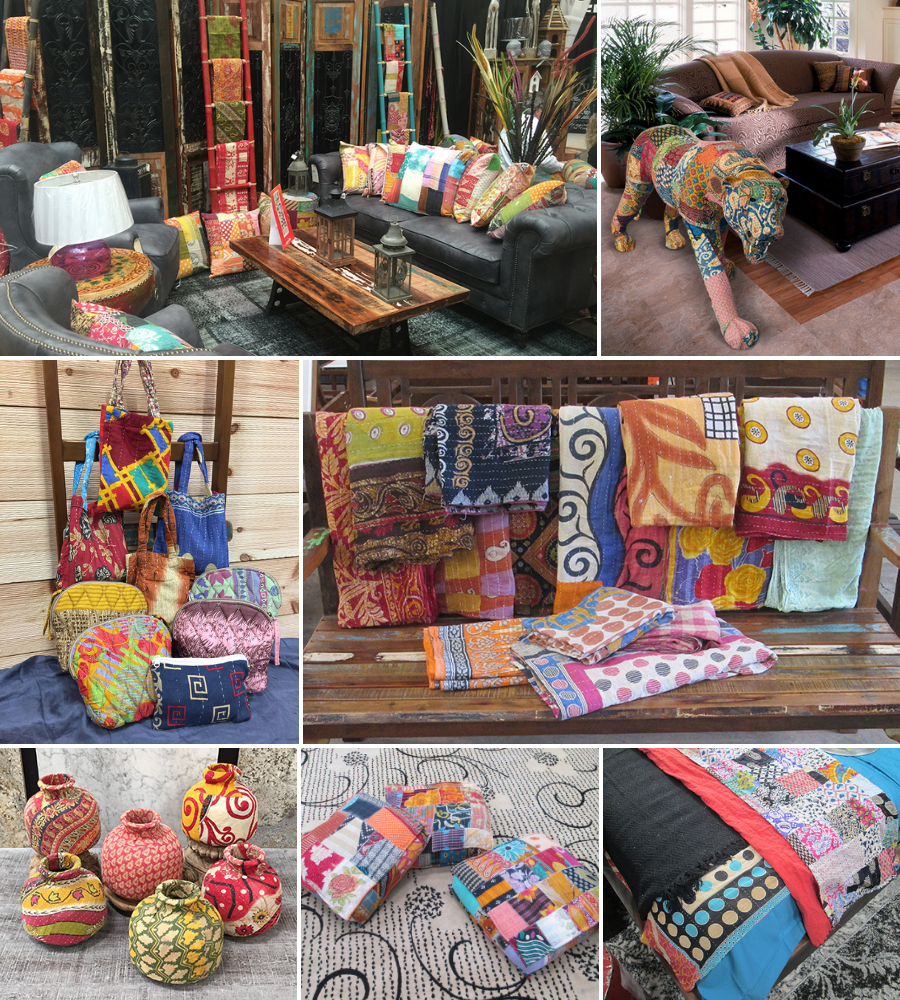
Show your support by posting your upcycled kantha photos on Instagram at @southeasternsalvage or on Twitter at @SESHomeEmporium
-All- -Get the Look- -Style- - How It's Made- -Lifestyle- -Holiday-
This website is designed to give customers a general idea of the type of products we sell.
Products, Styles, Colors, and Prices may vary by store. Prices subject to change without notice.
If you are looking for something specific, please confirm availability and price with the store.